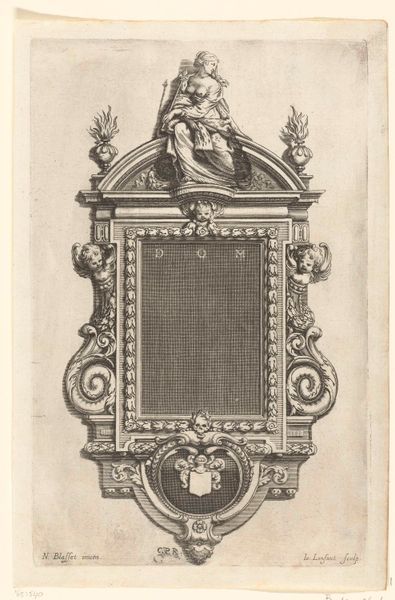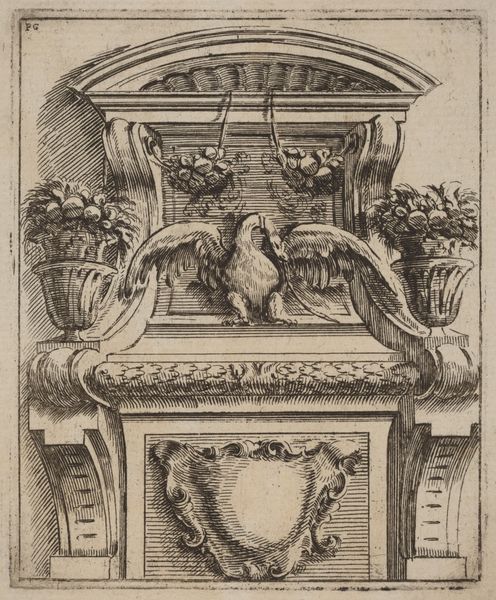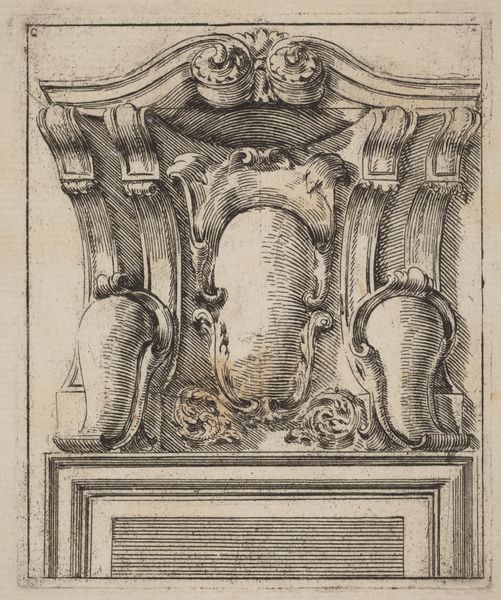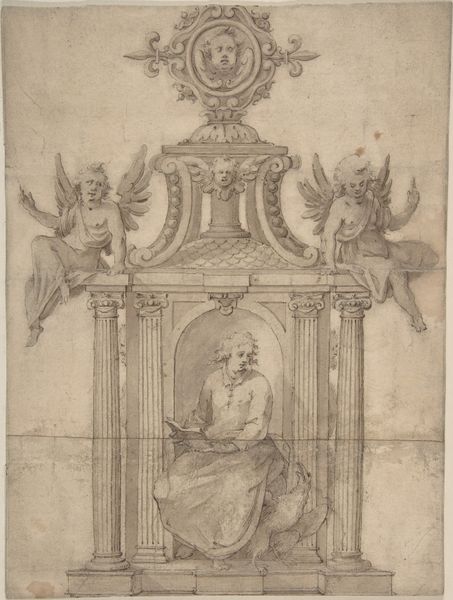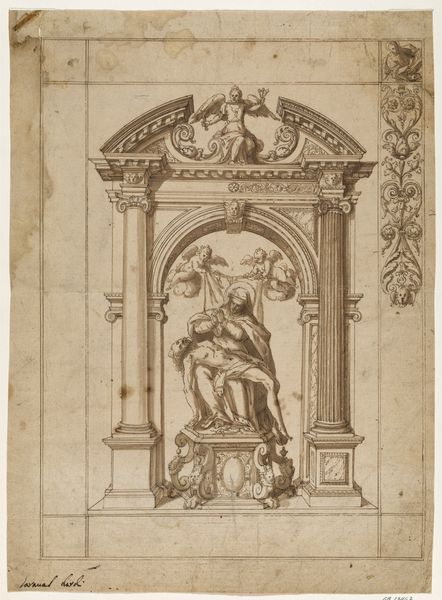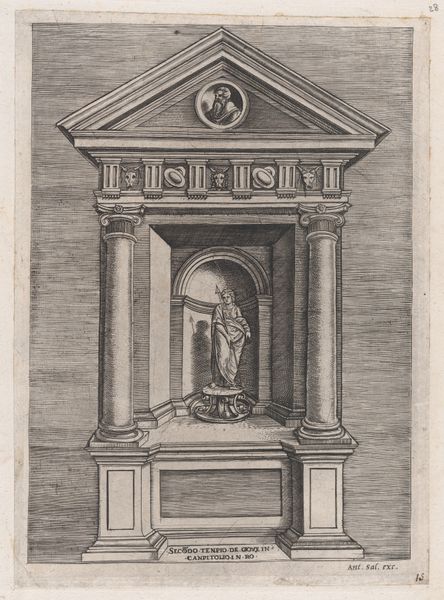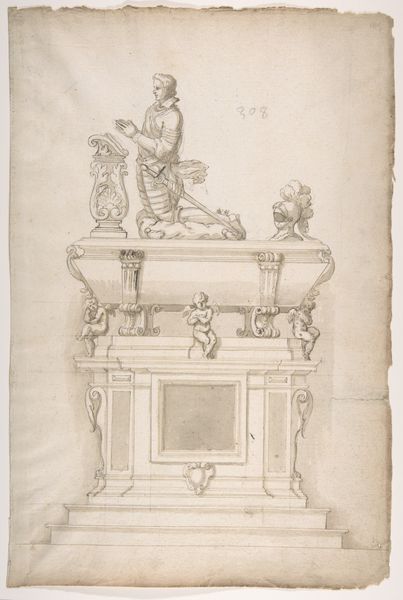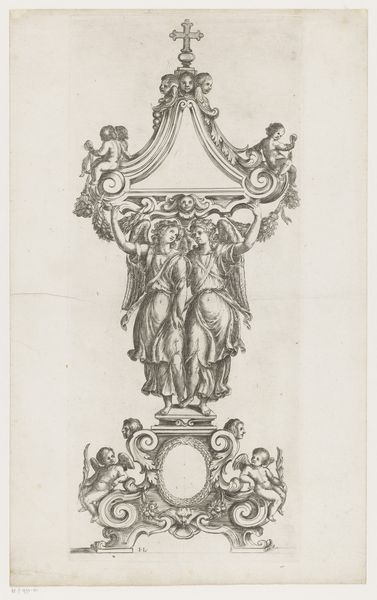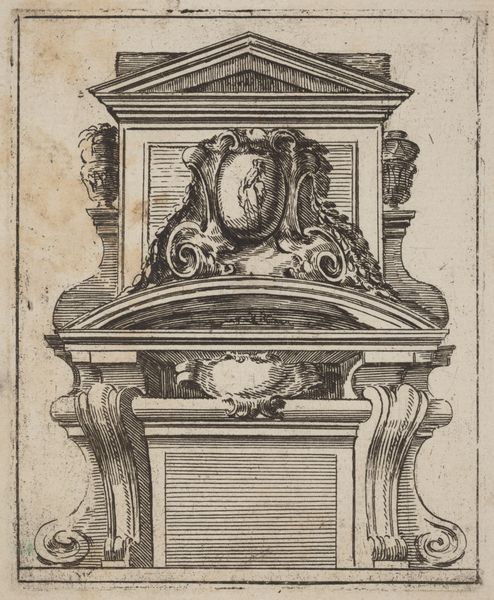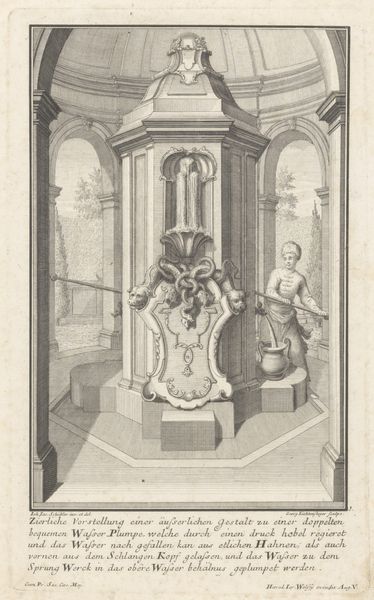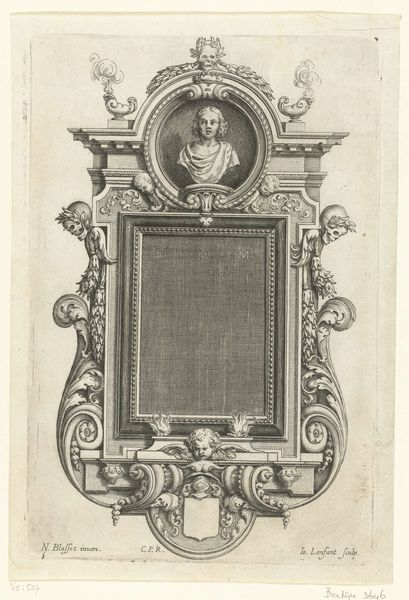
print, engraving, architecture
#
portrait
#
baroque
# print
#
form
#
line
#
engraving
#
architecture
#
realism
Dimensions: plate: 11.3 x 9.2 cm (4 7/16 x 3 5/8 in.) sheet: 16.7 x 12.2 cm (6 9/16 x 4 13/16 in.)
Copyright: National Gallery of Art: CC0 1.0
Carlo Antonio Buffagnotti made this print, "Architectural Motif with a Bust," in Italy in the late 17th or early 18th century. Note how the bust is framed within an elaborate architectural structure, complete with scrolling ornaments and heraldic shields. Prints like this played a crucial role in disseminating artistic ideas across Europe at the time. They allowed artists and architects to share designs and motifs, contributing to the spread of the Baroque style. The engraving suggests an idealized vision of classical antiquity, which was a popular theme during this period. The work presents a hierarchy: architecture framing art, and art representing idealized form. To fully understand this print, one could research the artistic networks of the time. Who were Buffagnotti's patrons and collaborators? How did his work contribute to the broader artistic debates of his era? By exploring these questions, we can appreciate how the meaning of this seemingly simple image is contingent on its historical and institutional context.
Comments
No comments
Be the first to comment and join the conversation on the ultimate creative platform.

